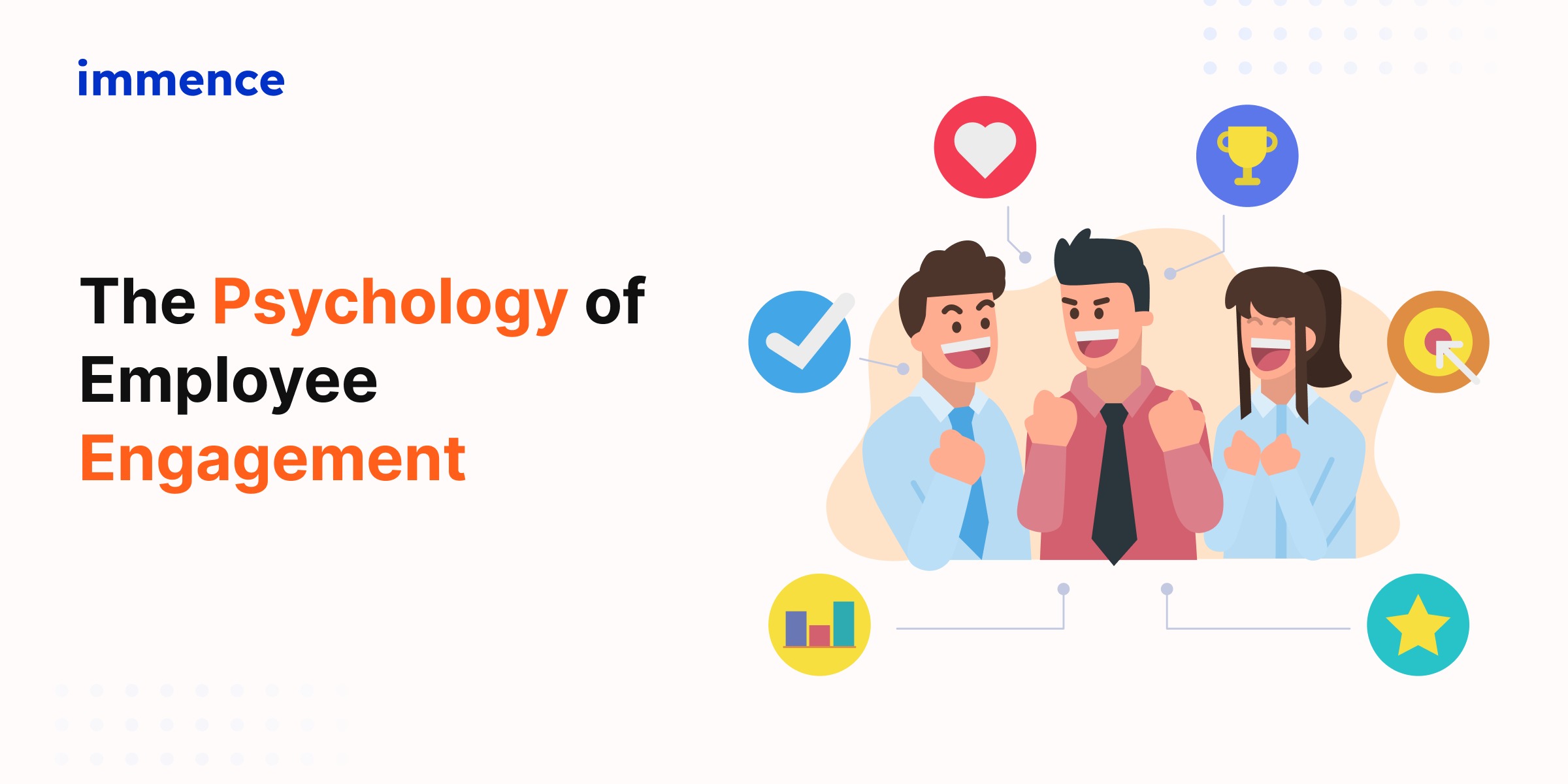The Psychology of Employee Engagement: What Drives Productivity in 2025

People want purpose and meaning from their work. They want to be known for what they’re good at.
Imagine a workplace buzzing with energy, where employees arrive with enthusiasm, tackle challenges with vigor, and leave at the end of the day feeling accomplished and valued. This isn’t just an idealistic vision, it’s the reality of organizations that truly understand and implement employee engagement strategies. Employee engagement isn't about fancy perks or superficial benefits. It's about fostering a deep emotional connection between employees and their work, creating an environment where they feel empowered, appreciated, and motivated to contribute to the company's success.
Understanding the psychology of employee engagement is no longer optional in today's fast-paced and competitive environment; it is essential. Let's look at what it takes to create an engaged workforce and how it may drive organizational productivity to new heights.
What is Employee Engagement?
Employee engagement is more than just a measure of job satisfaction, it is the deep emotional connection and commitment an employee feels toward their organization’s mission, values, and goals. While job satisfaction measures an employee's happiness with factors such as compensation, working conditions, and benefits, employee engagement assesses how motivated and attached they are to their work. An employee may be satisfied but disengaged, performing the bare minimum with no extra effort. True engagement, however, inspires employees to go the extra mile.
In essence, employee engagement shows how connected and enthusiastic your employees are about their contributions to the organization. A truly engaged team doesn't just work—they thrive.
Why is employee engagement important for organizations?
Gallup Journal recently released The State of the Global Workplace Report 2023. A whopping 62% of the employees are disengaged.
Employee engagement is essential to the success of any firm. Here's why.
- Increased Productivity: Research shows that highly engaged teams are 21% more productive than their disengaged coworkers.
- Lower Turnover: Engaged employees are less likely to leave, which reduces recruitment expenses and ensures continuity.
- Improved Customer Satisfaction: Happy and motivated employees provide better customer service, which boosts brand reputation.
- Innovation and Creativity: Engaged employees are more likely to think outside the box and suggest new concepts.
Ways to Boost Employee Engagement That Benefit the Most:
- Recognition and Appreciation
One of the easiest and most effective ways to engage employees is through regular recognition. Both monetary and non-monetary rewards for performance, and behavior, go a long way in making employees feel valued. Whether it’s a simple “thank you,” a public shout-out in a meeting, or a bonus, recognizing employees for their efforts makes them feel seen and appreciated.
Consider implementing an “Employee of the Month” program where team members nominate peers for their contributions. Alternatively, celebrate milestones like work anniversaries with personalized notes or small tokens of appreciation.
- Clear Communication and Transparency
Employees want to understand where they stand and how they contribute to the organization's success. Transparency in communication builds trust and ensures that employees understand the larger picture. It is equally essential for the managers and top-level management to be considerate towards the employees in their viewpoints, ideas, or suggestions. Check-ins, feedback loops, and town hall meetings all contribute to fostering an open culture.
For example, allow a Q&A session where employees can voice their questions and concerns openly.
- Professional Development Opportunities
Providing opportunities for growth is essential in keeping employees engaged. Employees benefit from training, mentorship, and skill-building initiatives, which help them succeed in their professions and feel supported by the organization.
For example, Launch a learning stipend program where employees receive a budget to attend workshops, conferences, or online certifications. Pair employees with mentors within the company to foster skill-building and career guidance.
- Empowering Employees
Giving employees the freedom to take ownership of projects and make decisions cultivates a deep sense of responsibility, pride, and purpose in their work. Empowerment not only drives creativity and accountability but also demonstrates that the organization values their insights and trusts their abilities. Employees thrive when they know that their opinions and thoughts are valued, and their contributions may have a significant impact.
Moreover, empowerment fosters skill development and growth. When employees are entrusted with decision-making authority, they are motivated to sharpen their abilities and explore new ways to excel in their roles. This, in turn, benefits both the individual and the organization as a whole. To ensure that empowerment is meaningful, organizations must provide the necessary tools, resources, and a supportive framework. It's also critical to provide direction without micromanaging, creating a balance that allows employees to take the initiative while remaining supportive.
For example, introduce “Innovation Fridays,” where employees can dedicate a portion of their time to work on ideas outside their routine responsibilities. This could include pitching new initiatives, experimenting with fresh approaches, or solving existing challenges in unique ways. Offer recognition for successful outcomes, and even implement some of these ideas in real-time to showcase trust in their potential.
- Work-Life Balance
A healthy work-life balance is crucial for sustaining employee engagement and preventing burnout. Employees who feel overworked or stretched too thin often lose motivation and become disengaged. Creating an environment where personal time is respected helps employees recharge and come back to work with renewed energy and focus. Offering flexible working hours, remote work options, and wellness programs shows employees that their personal and professional well-being is a priority for the company.
Organizations should actively encourage employees to take breaks, use their vacation time, and disconnect after work hours. By promoting a culture that values work-life balance, companies can ensure higher employee satisfaction and better productivity in the long run.
For example, Recharge Days: Introduce a quarterly initiative called "Recharge Days," where employees receive an additional day off to focus on personal well-being. This small gesture can significantly improve morale and help employees feel cared for.
Flexible Work Arrangements allow employees to work from home on designated days or offer compressed work weeks when possible. This flexibility helps employees manage personal commitments more effectively without compromising their performance.
Conclusion:
Ultimately, employee engagement isn’t just a strategy—it’s the secret sauce that fuels productivity, innovation, and long-term success. When employees feel valued, trusted, and empowered, they bring their best selves to work every day. It’s not just about hitting targets, it’s about creating a culture where people are excited to contribute, collaborate, and grow.
Leaders who actively foster this environment will not only see improved performance but will also build a resilient, loyal workforce ready to tackle any challenge that comes their way. So, invest in your people, celebrate their achievements, and watch as your engaged workforce propels your company to new heights.
In the end, a culture of engagement is not just a strategy- it’s the key to unlocking the full potential of both employees and the company as a whole.
Shreya Viradiya
Business Development Executive


